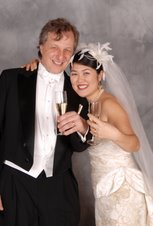 These old radiators and the heat brings me back to another day from my past.
These old radiators and the heat brings me back to another day from my past.My sophomore year at the Kansas City Art Institute, our professor Dale Eldred brought in his friend, Julius Schmidt, a master caster. He had been teaching at the University of Iowa, but rumor had it that his way of casting was not up to the safety standards so OSHA periodically shut down his foundry. In the casting world, he was a legend. He is responsible for introducing iron casting to the academic art departments first at Cranbrook Academy, by designing his own furnace system and was so dedicated to his craft that he had a cult-like following.
I remember the casting process being very strenuous and built muscles in my arm I never knew I had. The first week with Julius, he drove a group of us to the local dump to look for old cast iron radiators. We hauled the heavy pile of scrap back to the sculpture studio and then took turns crushing the radiators into 3" pieces with a heavy sledgehammer. That took about a week, hammering every day. We looked and felt like ex-cons working on a chain gang.
Julius taught us the process of melting iron in a cupola of his own design. He used a method discovered during the Industrial Revolution, of alternating coke (derived from coal) with the iron to to be used as fuel. The handful of us donned heavy leather gloves, jackets and boots in the late September heat and spent hours shoveling the mixture into the furnace.
When Chaim and I first came to our house to an open house and met the owner, Rachel White, I noticed a cast iron sculpture of a nude figure in the side garden. Rachel told us she had graduated from Alfred in the sculpture department and had studied with Julius Schmidt. She had bought the building hoping to turn it into a sculpture studio and make art. Unfortunately the grind of this city chewed her up and spit her out, landing her in Coral Gables Florida.
I hope this does not become my fate.
Julius Schmidt, is still alive and casting. I think he is probably in his eighties and is still a professor emeritus at University of Iowa.


No comments:
Post a Comment